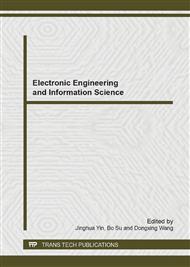p.490
p.494
p.501
p.505
p.509
p.513
p.517
p.522
p.526
Effectiveness Evaluation Model for Collaborative Command and Control System
Abstract:
Based on the theory of information and structure entropy, this paper analyses the influence of collaborative command and control system on information flow. Two concepts, time-effect and equality of information flow, are introduced, and the time-effect quality model is established, which can be used for evaluating the order degree of collaborative command and control system. Centralized, recursive and network cooperative structure and its time and space complexity respectively discussed. Study has shown that the recursive cooperative structure under the control of the command center is a relatively good structure.
Info:
Periodical:
Pages:
509-512
Citation:
Online since:
July 2014
Authors:
Price:
Сopyright:
© 2014 Trans Tech Publications Ltd. All Rights Reserved
Share:
Citation:


